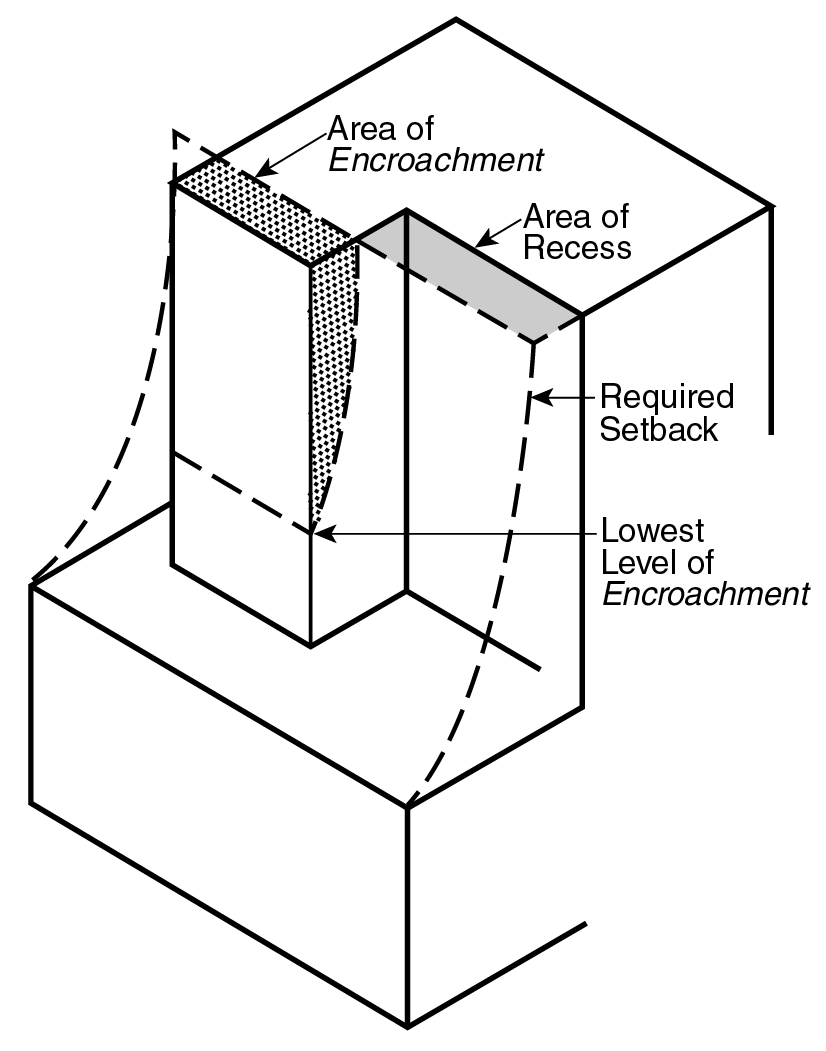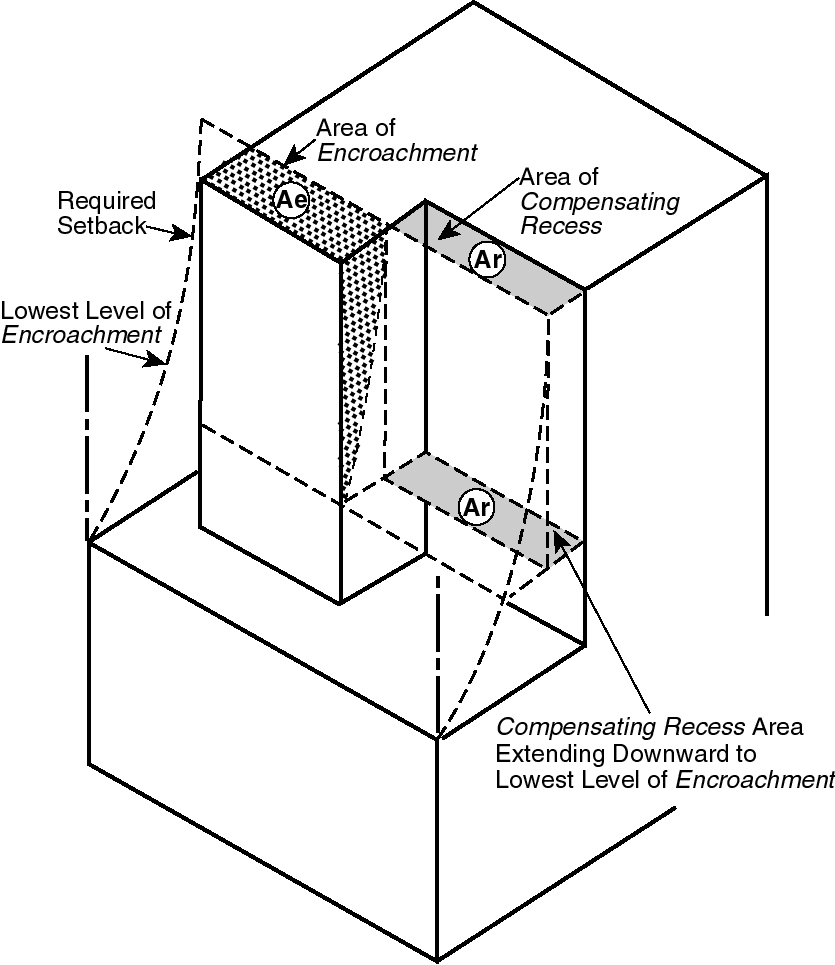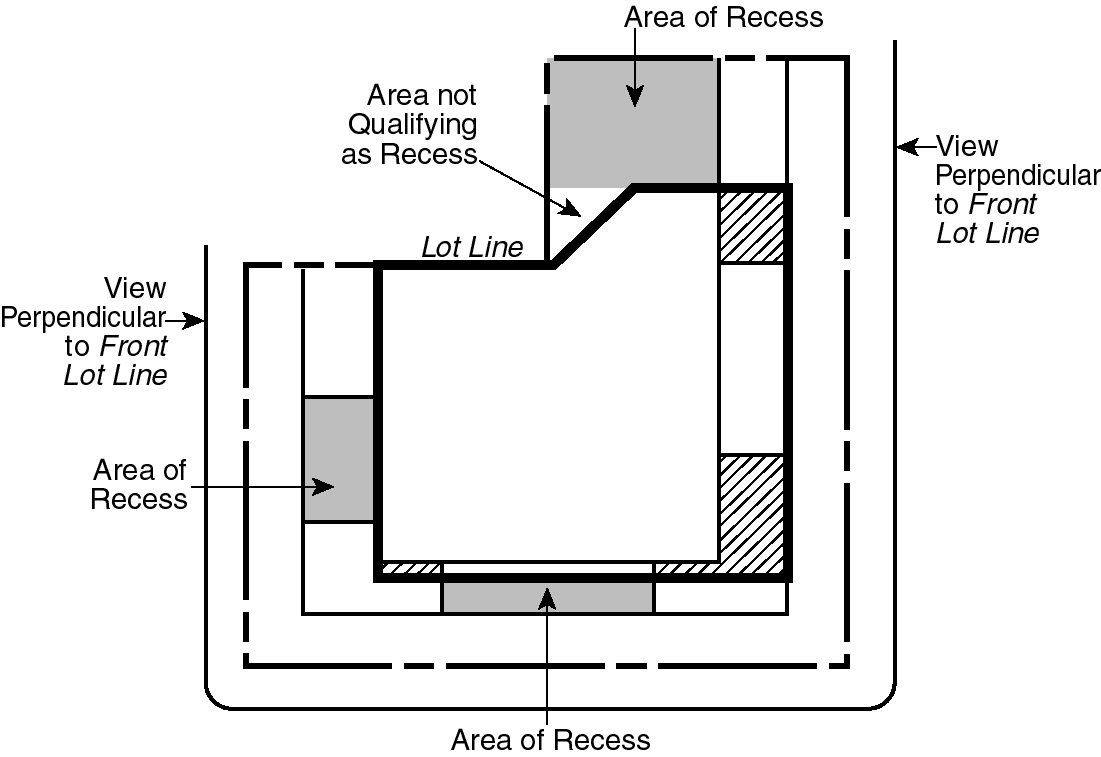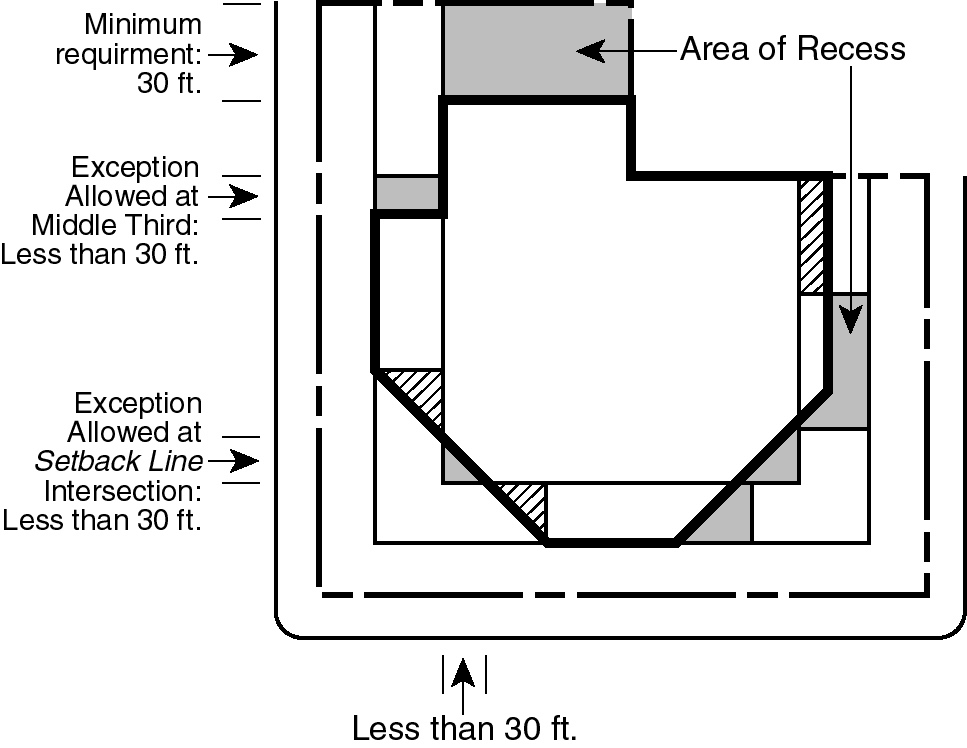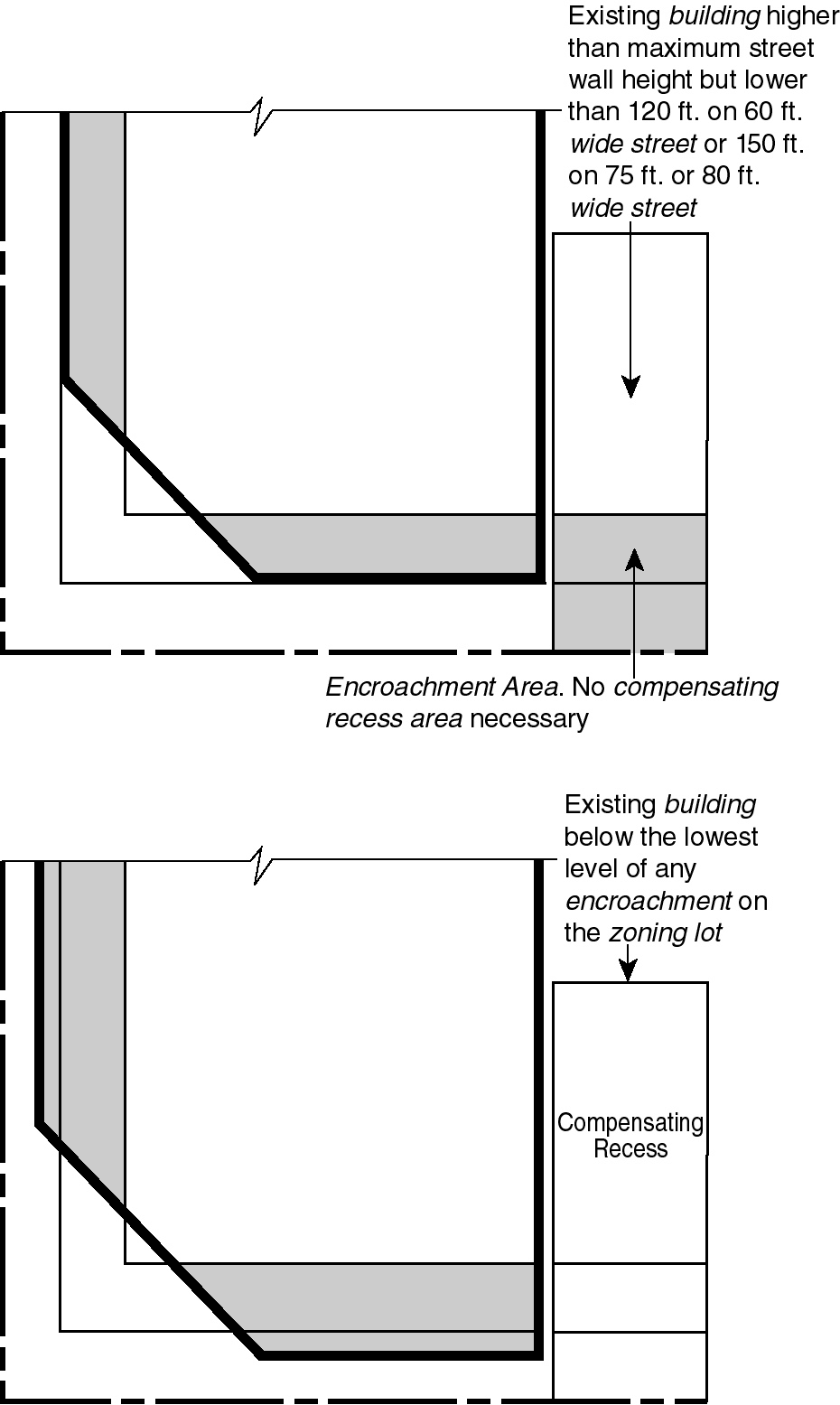Encroachments and compensating recesses
In addition to complying with the setback requirements of Section 81-263 (Standard setback requirements), a building shall not at any height encroach beyond a half-setback line or a ten-foot setback line, except as provided below. For each street frontage zone and for all street frontage zones, taken together on a single encroachment grid, a building shall not, at any level, have an aggregate area of encroachment beyond the setback line, other than in any free zones, greater than the aggregate area of compensating recess at such level.
Except as provided below, an area of compensating recess in one street frontage zone shall not be used to compensate for encroachment in another street frontage zone. However, a building with a street frontage zone which lies along a north-south wide street and does not meet the above requirements because of excessive encroachment will be in compliance with the street frontage zone requirements of this Section if compensation is provided for such excessive encroachment by an overlapping street frontage zone.
The requirement that the aggregate area of compensating recess at least equal the aggregate area of encroachment, as set forth in this Section, shall also apply to any building which encroaches beyond a half-setback line and which is therefore subject to the provisions of Section 81-265 (Encroachment limitations by length and height rules). (See illustration of Encroachments and Compensating Recesses)
(a) Rules for measuring encroachments and recesses
Areas of encroachment and compensating recess shall be measured in plan on one or more encroachment grids showing for the zoning lot, at a given height level, the street lines, the setback lines, the half-setback lines, the ten-foot setback lines, Zone A, Zone B and Zone C and the street frontage zones.
ENCROACHMENTS AND COMPENSATING RECESSES
(81-264a)
The scale of the encroachment grid shall be not more than 20 feet to the inch. All buildings, existing and proposed, shall be located accurately on the grid in plan at the height level selected to demonstrate compliance. For each street frontage zone, the areas of the building’s encroachment in Zone B and Zone C and the compensating recess areas not covered by any building in Zone A shall be measured on the encroachment grid.
(b) Limits of encroachment
Except as provided in paragraph (d) of this Section for existing buildings below specified heights, encroachment is limited as follows:
(1) For each street frontage zone, at every height above the maximum front wall height at the street line, the area within Zone A that is not covered by a building and qualifies as compensating recess area shall, in the aggregate, equal or exceed the aggregate area in Zone B and Zone C that is encroached upon by a building at such height.
(2) No part of a building shall encroach into Zone C unless it complies with the provisions of Section 81-265.
(3) On corner lots, the projection of a building beyond the setback line or half-setback line on the narrower street shall not count as an encroachment except at heights above the maximum height permitted at the street line by the corner lot provisions in paragraph (b) of Section 81-262 (Maximum height of front wall at the street line).
(c) Limitations on compensating recess
Compensating recess areas are subject to the following limitations:
(1) Any required compensating recess area shall extend without diminution of dimensions downward at least to the lowest level at which any encroachment into Zone B or Zone C occurs and upward to the sky. (See illustration of Extension Downward of Compensating Recess Area)
EXTENSION DOWNWARD OF COMPENSATING RECESS AREA
(81-264c1)
(2) Compensating recess area shall be visible when viewed from at least one adjacent street along a line that intersects the front lot line of the zoning lot at right angles. (See illustration of Visibility of Compensating Recess Area)
VISIBILITY OF COMPENSATING RECESS AREA
(81-264c2)
(3) The minimum length of a compensating recess, measured parallel to the street line, and behind the setback line, is 30 feet, except for any uncovered portion of an area that qualifies as Zone A under the middle one-third rule or an uncovered area located behind two intersecting setback lines. An uncovered area between the setback line and half-setback line that qualifies as Zone A under the middle one-third rule is not subject to the minimum length requirement. (See illustration of Minimum Length of Compensating Recess)
MINIMUM LENGTH OF COMPENSATING RECESS
(81-264c3)
(4) Compensating recess area shall be within 100 feet of a front lot line.
(d) Existing buildings on the zoning lot
Where a zoning lot contains an existing building which exceeds a height limit, an enlargement or development on such zoning lot shall comply with the following provisions:
(1) For each street frontage zone, if the existing building is not more than 120 feet in height at any point and encroaches into Zone B or Zone C or beyond the ten-foot setback line along the frontage of a street 60 feet wide, or if the existing building is not more than 150 feet in height at any point and encroaches into Zone B or Zone C or beyond the ten-foot setback line along the frontage of a street 75 or more feet in width, the new building or enlargement is not required to compensate for such encroachment by the provision of compensating recess areas. Encroachment by such an existing building into Zone C or beyond the ten-foot setback line will not subject the new building or enlargement to the provisions of Section 81-265 unless the new building or enlargement also encroaches into Zone C.
(2) For each street frontage zone, space above such existing building and within Zone A on the encroachment grid may count as compensating recess area for the new building or enlargement provided that such space is at or below the lowest level of any compensable encroachment by the new building or enlargement, that it is located within the same street frontage zone as that compensable encroachment, and that it qualifies in all respects under the provisions of paragraph (c) of this Section (Limitations on compensating recess).
(3) For each street frontage zone, if an existing building more than 120 feet in height at any point encroaches into Zone B or Zone C or beyond the ten-foot setback line along the frontage of a street 60 feet wide, or if an existing building more than 150 feet in height at any point encroaches into Zone B or Zone C or beyond the ten-foot setback line along the frontage of a street 75 or more feet in width, the encroachment of such building into Zone B or Zone C or beyond the ten-foot setback line at any height shall be subject to the requirements for compensating recess areas set forth in paragraph (b)(1) of this Section, as if it were a new building. Where such an existing building encroaches into Zone C or beyond the ten-foot setback line, the provisions of paragraph (f)(2) in Section 81-265 shall apply in addition to the provisions of this Section. (See illustration of Existing Buildings on the Zoning Lot)
EXISTING BUILDINGS ON THE ZONING LOT
(81-264d3)

